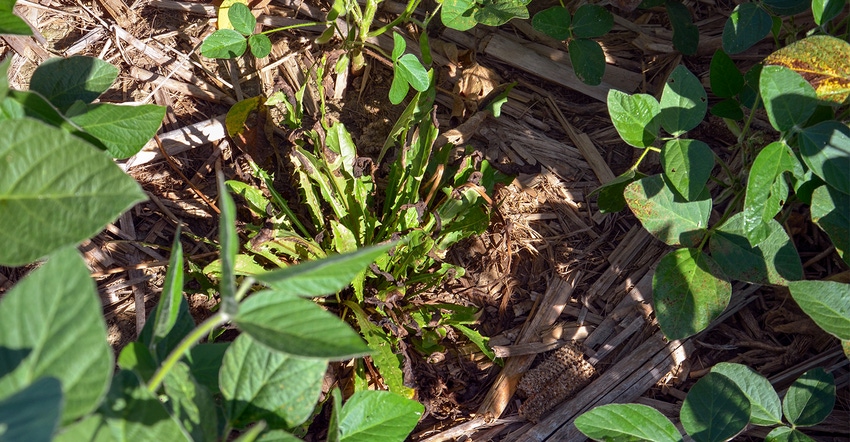
There are many reasons to consider a fall herbicide application. One of the biggest is if you have specific perennial weed problems. “If you have fields where dandelions and Canada thistle are becoming an issue, those fields are good candidates for fall herbicide applications,” says Steve Gauck, a sales agronomist for Beck’s, Greensburg, Ind.
“Dandelion is a tough perennial to kill,” he says. “If you want to try to get rid of them, not just live with them, fall is a great time to start that process. In late fall, they’re sending food reserves down to the roots. If you apply a herbicide like glyphosate that translocates, you have a good shot at getting herbicide in the root systems.”
The same is true of Canada thistle, he observes. He visited a field this summer where Canada thistle was prevalent in many places. After the farmer sprayed glyphosate and Cadet, most of the top growth died.
“Odds are new shoots will come up this fall, either from the seed bank or underground roots,” Gauck says. “Hit them with glyphosate and 2,4-D or some other appropriate application, and you have a good opportunity to make real progress at destroying plants.”
Wiping out either dandelion or Canada thistles with one application is a stretch, he notes. Working on them in the fall can be a big step forward. The best time to spray Canada thistles is after a light frost but before a killing freeze. Plants are actively moving material into the roots during that time.
About the Author(s)
You May Also Like




